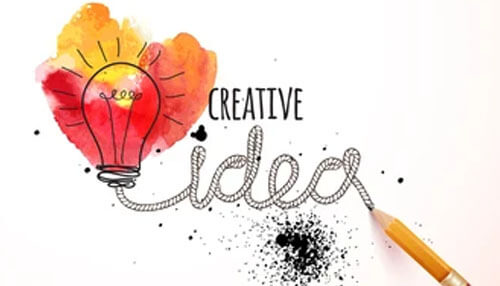One of my favorite things to do is pull back the veil on everyday things and see what’s really going on versus what most people think. To do that today, let’s take a look at this fascinating example of how creative ideas are born.
I recently saw a story about how a waffle iron inspired Nike’s shoes.
Nike’s shoes were inspired by the same griddle that makes your breakfast
From Business Insider: “Nike co-founder Bill Bowerman was having breakfast with his wife one morning in 1971 when it dawned on him that the grooves in the waffle iron she was using would be an excellent mold for a running shoe.”
We hear stories about “ah-ha!” moments like this all the time. And they lead us to think that great ideas come as either a result of exceptional brilliance or dumb luck.
Here’s what actually happened: Bowerman spent nearly a decade studying jogging best practices, making improvements to athletic footwear designs, and even co-writing a book on running—all years before he had this idea.
He teamed up with a business partner who had a master’s in business and knew the running shoe market. The two of them earned $3 million selling shoes before designing even one of their own…and starting the business we know as Nike.
While the waffle-iron story is cool, if that’s all we hear, then we miss where the revolutionary idea really came from.
With any creative idea, yes, breakthroughs do happen along the way, but there’s something much deeper going on than inspiration striking down like lightning bolts from the sky.
The myth of “The Great Idea”
Creativity is surrounded in a fog of myths. Just saying the word conjures up images of geniuses scribbling down great ideas with feather pens and Moleskine notebooks. or starving artists chipping away at sculptures all day.
The truth is, creativity is not about magic, and it’s not something reserved for the elite or a trait that only “naturally” creative people have.
As it turns out, you can learn to be more creative and consistently produce great work at any time. There is a process—a system—to come up with “brilliant” or “genius” ideas.
Which is important for all of us. If we want explosive growth in our business, career, and life, we can’t keep doing the same things we’ve always done. We’ve got to innovate. We’ve got to think outside the box.
To see what I mean, take a look at these examples of creativity applied to everyday life:
1. A new spin on an old idea.
Did you know FedEx’s idea for overnight delivery actually came from the banking industry? Yep. Banks used to be one of the only overnight delivery services because they had to clear checks quickly. To do that, they’d send all checks to a central processing location and then fly them out to the appropriate bank branch. FedEx applied this same strategy to the way packages were delivered. The “overnight” package was born. A 10x industry insight that came from putting a creative spin on an old idea
2. Doing more with less.
Phil Hansen, an art student, was struck by a debilitating injury. The surgery he had to fix it left him with a shaky hand. Most people thought he’d never make art again. But he found a way to use the constraints he was left with to his advantage. How? He came up with the idea for an entirely new style of art, using shaky lines, which he couldn’t help making. He looked at his “problem” in a totally different way and that made all the difference in his life (I highly recommend watching his TED talk about what he learned).
3. Negotiating more perks from your job.
If you want more from your employer but your boss won’t budge on salary, brainstorm some other perks you could ask for. Maybe you could ask to work from home 1 day/week, get increased vacation time, or receive an “education” budget for books and conferences.
See? Creativity is not just about “woo woo” thinking or “hey, come draw with me.” It’s a crucial skill for your life.
I want to hear from you
What works best for you when it comes to being creative? Are you at your most creative when you work in teams? Or alone? Or maybe you thrive when you’re working under deadlines?
Let’s hear what your secret to creativity is today in the comments below.
And tomorrow, we’ll dig deeper into how to turn on your creativity switch with a system that guarantees you produce more and better work.



